When ‘True Detective’ debuted back in 2014, it instantly dazzled everyone. A sinister serial killer on the loose and a couple of detectives, who are struggling to keep their personal lives intact, made for a compelling storyline supported by the brilliant performances from its actors. The show was an instant hit and was, soon, followed by a second season, which turned out to be a huge disappointment. Hence, when it was announced that there’d be a third season, the fans were stirred into anticipation. This season was going to be the “make or break” scenario for the series. There was a lot of responsibility on the shoulders of this story; it needed to be really good. The best choice that the producers made was to bring Mahershala Ali, who had freshly won an Academy Award, on board. To be honest, the kind of story that Nic Pizzolatto had concocted for this season needed a strong actor to pull it off.
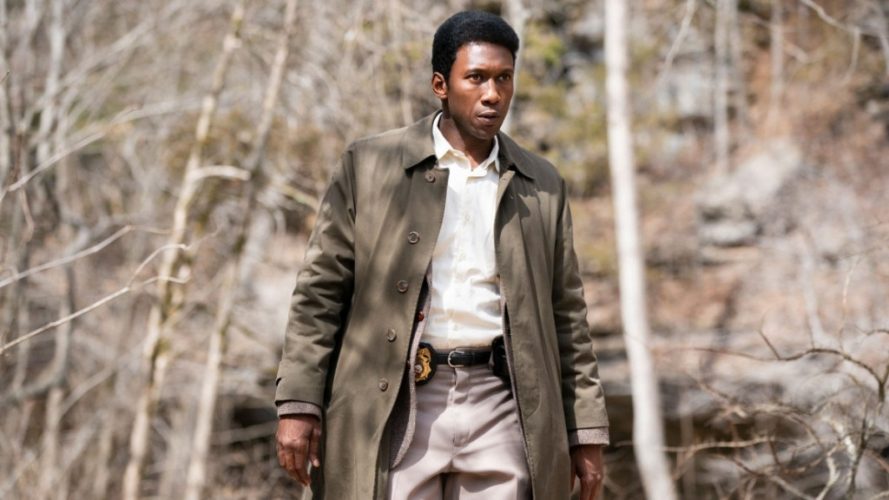
Even though it wasn’t better, or perhaps even as good as, the first season, this year’s ‘True Detective’ fuelled a strong breath of life into the series. Going back to the ways of the first season, this story was told from a perspective that went back and forth in time and indulged the fancy of the audience by giving them a lot of threads to pull on, giving them a chance to play the detective and work out the killer. What added to the excitement was the placement of the first and third season into the same universe. This allowed the viewers to come up with their own theories and has also prepared the ground for the possibility of a crossover, something that we can expect from the next season.
The third season of ‘True Detective’ fell flat on a couple of places, but for the most part, it worked wonderfully. The complex structure, playing in and out of three timelines, simultaneously, was a great way of presenting the story. However, it also poses the possibility of getting confused. Here, we have tried to straighten it out, fix the creases, and present a clear picture of what was going on in the show.
Season at a Glance
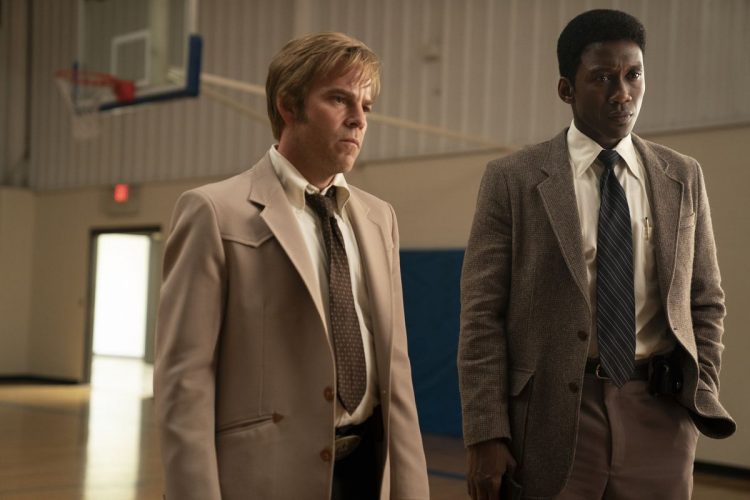
One evening, William and Julie Purcell leave their house to go play with a friend. They promise their father, Tom, that they’ll be back before the dark. When night falls and they don’t return, Tom calls the police to file the missing person report. Detective Wayne Hays and his partner Roland West are tasked with solving the case, and as the search for the kids continues, the detectives familiarise themselves with the people surrounding the kids. Soon, Hays discovers the body of Will, laid to rest with his hands clasped in prayer. Hays also finds a couple of mysterious dolls close to the crime scene, which points towards the possibility of the indulgence of some cult. A number of people are brought under the scrutiny as the detectives try to narrow down the suspects. This case turns into a quest that takes up most of their lives, deeply influencing both their professional and personal worlds. The investigation goes on and off two more times before the detectives finally find closure with the case.
The Chronological Chaos
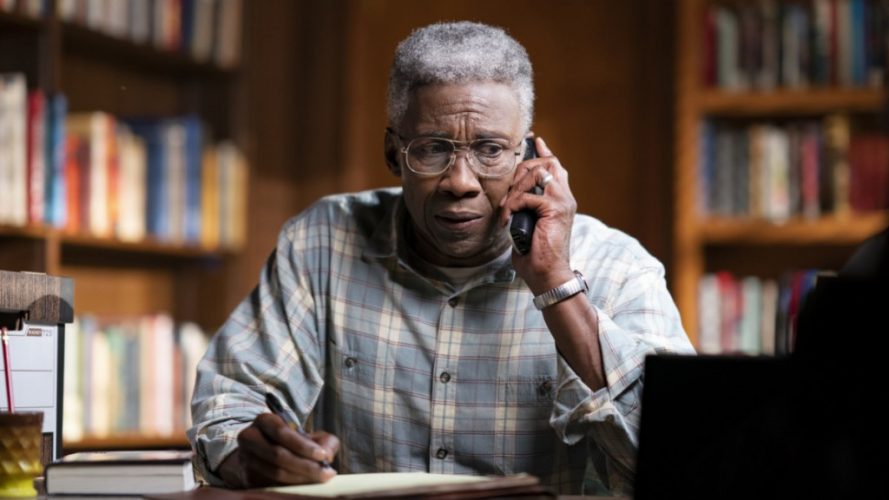
Within the first few minutes of the first episode, it becomes clear that the story is divided into three timelines. This also gives us the idea that whatever happens in the first two timelines will need more attention from the viewers than its characters. If the case had met proper conclusion in one of the first two attempts, then a third timeline wouldn’t be necessary. The going back in forth in time was handled in a great manner, by using a number of tools to separate our understanding of the story. While the makeup played a big role in it, it was actually the growth of the characters, the changes effected by the case on their personalities that became a crucial point in compartmentalising the three eras. Here is how everything went down, chronologically:
1980, The Time of the Crime

Wayne Hays, having served as a recon soldier (LRRP, to be precise) in the Vietnam War, is now working as a detective for Arkansas State Police. One night, while shooting rats with his partner, Roland West, he receives a call-in for the case of two missing kids. The detectives quickly take rein of the situation and begin to work out the various likelihoods. While going through the rooms of the kids, they discover a peephole from Will’s room to Julie’s. The strained relationship of the parents becomes instantly obvious, and they also come to know about Lucy’s cousin- Dan, who had stayed in Will’s room for a few months that he was in town for. He becomes a person of interest, along with a group of teenagers from the same school, and another Vietnam War veteran, Brett Woodard. The next day, Hays finds Will’s body in the woods, along with a couple of weird hay-dolls. Soon after, the parents receive a letter that tells them to “let go of Julie”.
While their investigation continues, Hays gets to meet Amelia Reardon, an English teacher at the school who had known the kids. She becomes an active part of the investigation, trying her best to help the detectives in communicating with children. Her involvement leads to some breakthrough, and she also begins a romantic relationship with Hays. On the prodding from Amelia, a kid, named Mike, reveals that he had gone out on the night of Halloween with the Purcell kids and that someone had given the dolls to Julie. Mention of two sheeted-ghosts also comes up.
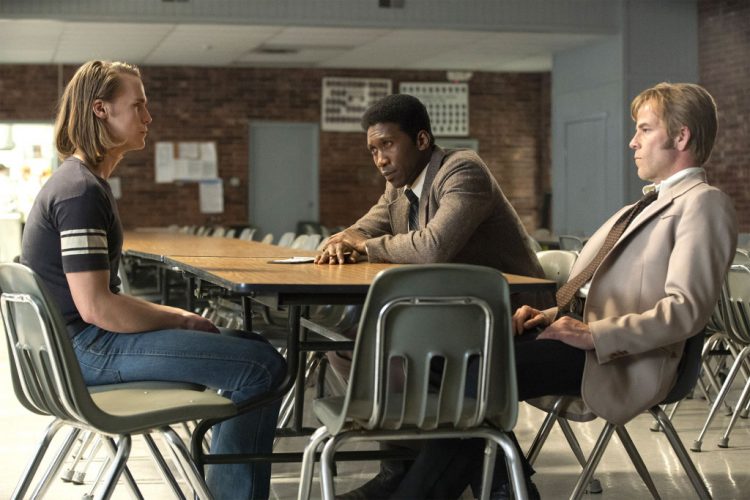
In the woods, the detectives discover a place with the playthings of the kids and deduce that the children had been secretly meeting someone there. Their father had no idea of this because they had been lying to him about going to some friend’s place to play with. On questioning the man who owned a house near the woods, they come to know about a black man with one eye and a white woman who had been seen driving around the place. Meanwhile, the town starts to get heated up, worrying for the security of the children. Woodard becomes the target of their fury, even when he has been cleared by the detectives. While questioning one of the teenagers, the police come to know about the situation at Woodard’s place. Locals have ganged up against him, accusing him of being a paedophile and a murderer. The showdown results in the death of a couple of civilians and cops, and in the end, Hays is forced to shoot him dead. A day or two later, Will Purcell’s bag and Julie’s burnt clothes are found at Woodard’s house, which leads the police to decide that Woodard had killed both Will and Julie.
Hays, however, is not satisfied with this. He knew about Woodard’s struggles after returning from the War, and also, there were other signs that pointed in a different direction. All the while, he has been discussing his doubts and findings with Amelia. Dissatisfied with the verdict, she writes an article in the newspaper about the wrongful conviction. For this, Hays is given the choice to either discredit her or to get demoted. Hays chooses the latter. This also leads to a minor fall-out between him and Amelia, but they work it out and get married.
1990, Back to the Start
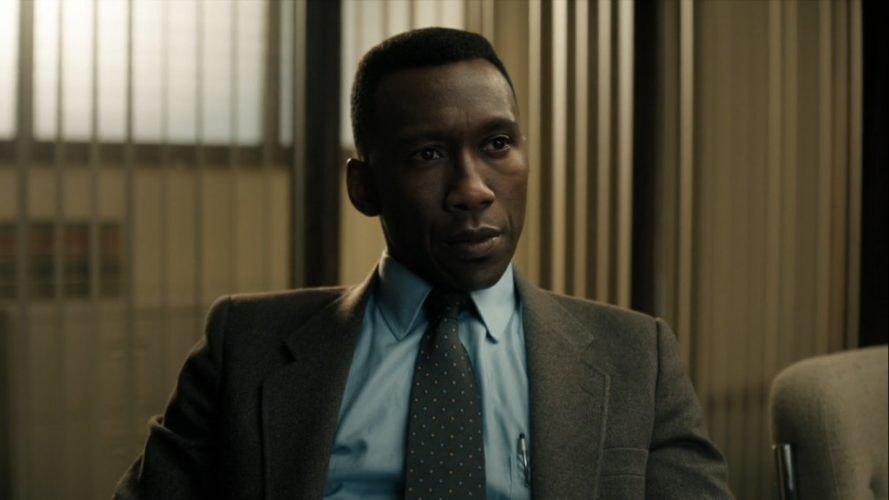
It has been ten years now since the case was closed. Hays and Amelia are married and have two children. He is still working his menial job and Amelia has written a book about the Purcell case. Roland West has worked his way up to become a lieutenant and has lost touch with Hays. Tom Purcell, who had been utterly broken since the loss of his children, has succeeded in turning over a new leaf with the help of West. Lucy Purcell died of drug overdose in a hotel in LA. Woodard’s children have appealed to overturn the wrongful conviction of their father, and new information has come to light which has allowed the reopening of the case. Hays is called in for a deposition where he comes to know that Julie Purcell’s fingerprints were found in a supermarket, i.e., she is alive. A task force is set up, with West as the lead detective, allowing Hays another chance to work at the case. They decide to see the whole thing through this time, revisiting every information related to the case to find out what they had missed the last time. One of the things that Hays comes to realise is that Will’s bag had been planted at Woodard’s house to make it seem like he was the killer.
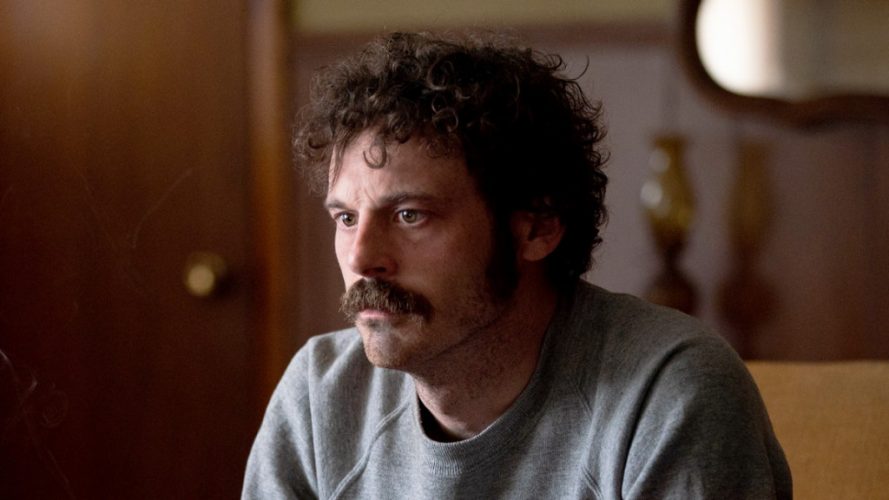
Meanwhile, a hotline set up by the police, to receive information on Julie, receives a call from her. She asks to be left alone, accuses Tom of acting like her father, and asks about her brother. This brings Tom Purcell under the radar and he becomes a person of interest. Prior to this, the detectives interview a man who tells them that Julie had lived on the streets for some time, under the name of Mary July, and had later found sanctuary at a convent. She had talked about being “a princess from the pink castle”.
The detectives follow up on Lucy’s death and discover that she had received a bunch of calls on the day prior to her death, which leads them to Hoyt Foods, where Lucy had been employed sometime before the case. They also meet up with Dan O’Brien who hints at Lucy’s death being murder and at the involvement of some people in high places in the Purcell case. This leads them to Harris James, the Head of Security of Hoyt Foods, who incidentally happens to be the police officer who had identified Will’s bag when it was found at Woodard’s house. The fact that he had been in LA when Lucy had died, coupled with the fact that he was offered a high position at Hoyt Foods after the Purcell case was wrapped up in the 80s, makes them suspicious of him.
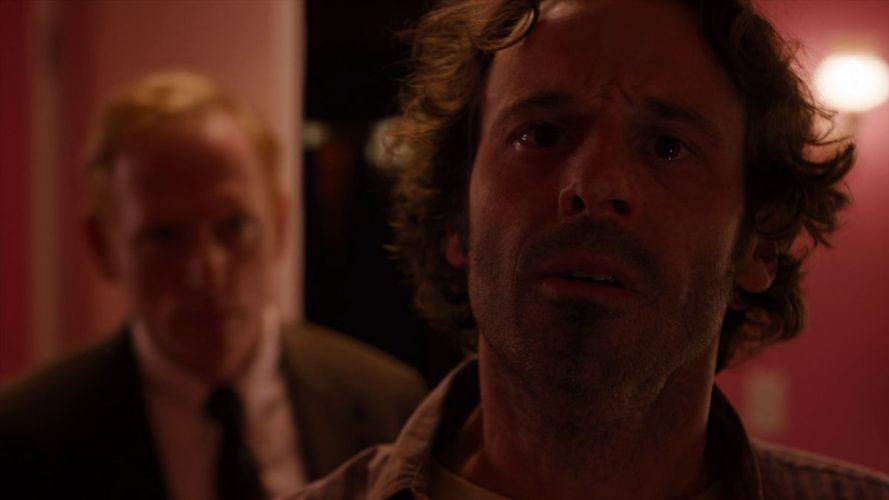
Meanwhile, Tom Purcell comes to know about Dan’s presence in the town and pays him a visit. Dan tells him everything and Tom breaks into the Hoyt manor. There, he discovers a pink room, but before he can put two and two together, he is intercepted by Harris James, and the next day, Tom’s body, staged as a suicide, is found on the water tower where Will was last seen. Taking back their conviction of Woodard, the police put the blame on Tom. His identity as a closeted homosexual allows them to build a story around his character, and the case is closed, again! And again, Hays doesn’t agree.
Hays and West continue their investigation and decide to pull the truth out of Harris James, which eventually leads them to shoot him dead. They bury his body in the woods and go their separate ways. The next morning, Hays receives a call from Edward Hoyt who takes him to a secluded place to discuss the events of the previous night. Hoyt indicates to Hays that he knows about James’ murder and suggests him to leave the investigation be. Hays tries to make Hoyt confess, or at least blurt out some information about what had actually happened all those years ago. Hoyt threatens him and they part ways.
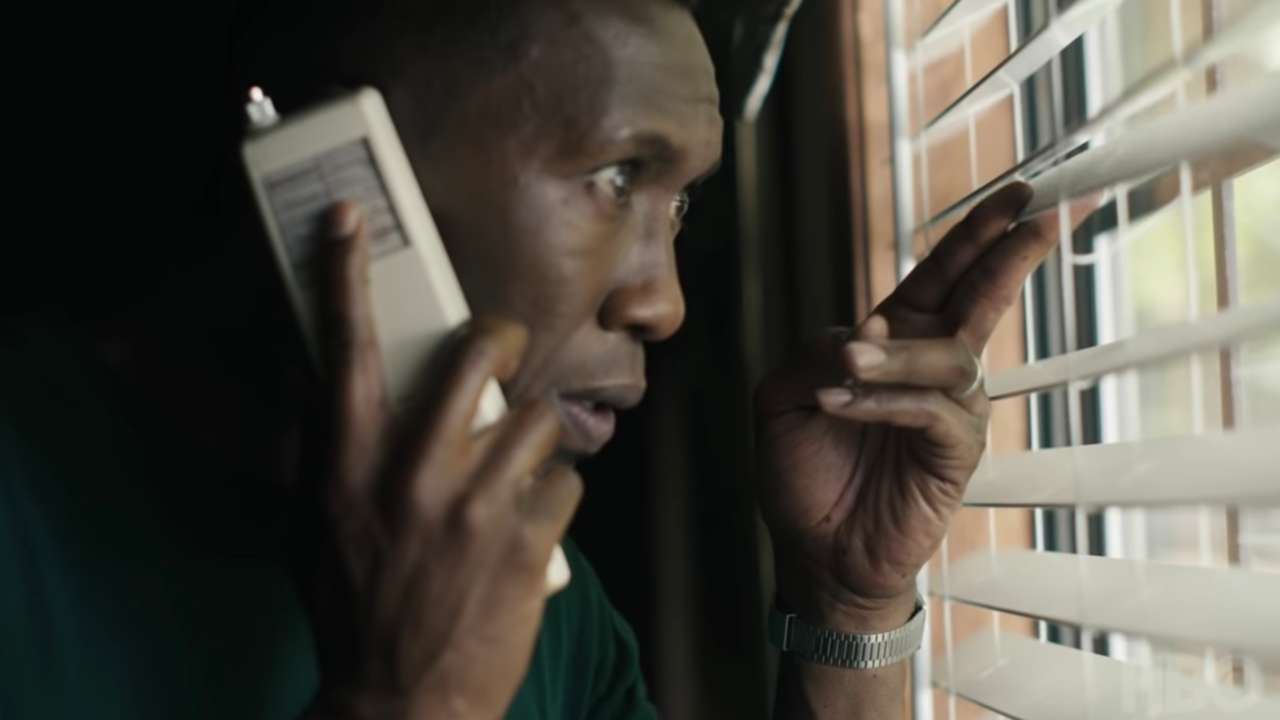
All this while, Wayne’s relationship with Amelia had been facing some hard times. With the reopening of the case, she had decided to write a sequel to her book about the Purcell case. Again, she becomes an active part of the conversation, and in one of her book readings, she is confronted by a black man with one eye. She relays this information to Wayne, but by then, Tom had died and the case had already been closed. After she finds him burning his clothes in their backyard, Amelia demands an explanation from him. Before they can talk it through, Wayne comes face to face with Hoyt and decides that it’s best to leave things be. He and Amelia admit that both of them had been too obsessed with the case, and in the effort to move forward, they’ll have to leave it behind. And so, they drop any attempts at further investigations.
In Between
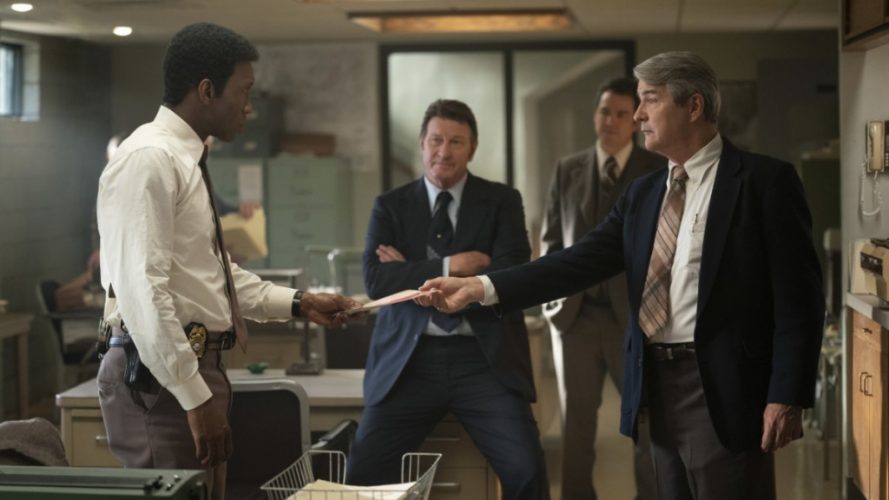
From a couple of flashbacks in between, we come to know that Wayne quits from the force and becomes the Chief of Campus Security for the University of Arkansas, where Amelia works as a professor. The dynamic between them seems to have stabilised now. Their children grow up and move out. The son joins the force and later, becomes a detective. Sometime later, Amelia dies, though exactly how, we are not told. But we can deduce that it might have been because of some disease, or an accident, perhaps. His daughter, Rebecca, is following a career in music, and from the first episode, it seems that their relationship is a bit strained. In the end, however, she comes back and when he asks whether he had “lost her”, she replies with a no. The reason for this tension between them doesn’t seem to exist when they finally meet. We never get to the root of why it existed in the first place, or if it even existed at all. Perhaps, she had just drifted away, trying to build a future for herself and Henry’s frustration on the mention of her name, in the first episode, could just be because he feels like she has abandoned her part and left the whole responsibility of their ageing father on him.
2015, The Murder and Its Memory
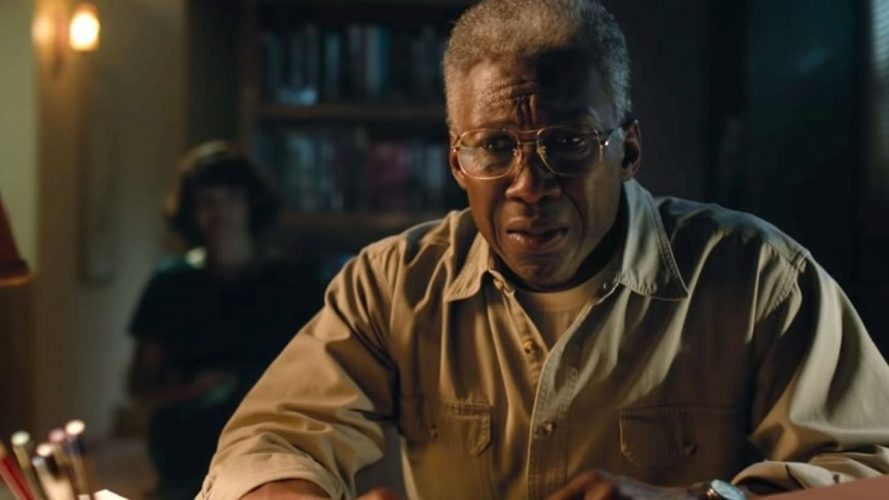
Wayne is made to revisit the case one more time when a true crime documentary show asks him for a series of interviews. Even though his memory is failing him now, Wayne begins to pick up the pieces that had been left behind all those years ago. The interviewer, Elisa Montgomery, who had also been having an affair with Henry, prods him for several leads that the police didn’t follow, and opens him up to the possibility of Will Purcell’s murder and Julie’s abduction as the part of a greater conspiracy. This leads her to point, twice, towards a similar investigation that had spanned over a couple of decades and had ended with the exposing of a paedophile ring with several big names attached to it. She also points towards the hay-dolls, speculating that they could be a symbol of these groups, just like they had a crooked spiral symbol in a previous case. Through this part of the conversation, a reference to the first season is made and it is confirmed that the Dora Lange case from the first season and the Purcell case from the third, exist in the same universe.
Elisa also brings it to Wayne’s attention that almost everyone involved with the case is dead now, with shady circumstances surrounding their death. Meanwhile, Wayne has been losing the control of his memories and has been having hallucinations, haunted by the ghosts of his wife and the people he had killed. In one of the scenes, as he tries to breakdown the new information in front of him, we see him surrounded by a bunch of men, who are possibly the people he had killed in Vietnam, along with a man in the black suit, indicating his guilt for killing Harris. He has also noticed a car outside his house for a long time. Finally, he has started reading Amelia’s book and discovered some things that have shed new light on his understanding of the case. He tracks down his old partner, Roland West, who has been living a secluded life in the countryside and urges him to pick up where they had left off to solve the case, once and for all. Interviewing people who hadn’t been bothered with before, they are finally able to track down the black man with one eye and discover the truth about what actually happened to the Purcell kids.
The Truth is Always Simple
There is a line that says (forgive me for not remembering its source), “You never know where a case will take you.” ‘True Detective’ presents a fine example of this. Just like its first season, the third season of the show kept us all wound up in a number of red herrings and led us to build all sorts of theories about the murder. It wasn’t until the second last episode, or so, that we got a proper picture of what turned out to be the actual series of events.
Their final stage of investigation in 2015 leads Hays and West to a man named Junius Watts, the black man with one eye that they had been looking for all along. Watts tells them the whole story in detail, confessing that he had been the man in the car outside Hays’ house, preparing himself to walk up to his door and tell the truth. Here is the whole story.
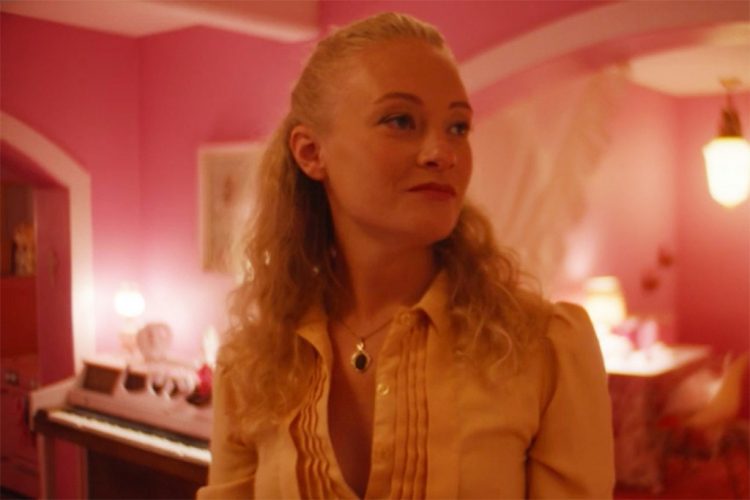
Edward Hoyt, the founder and owner of Hoyt Foods had a daughter named Isabel. Isabel’s husband, and their daughter, Mary, had died in a car accident. This left Isabel distraught and unhappy. She used to take Lithium to calm down herself. One night, she got in a car accident, where Harris James dealt with the situation. This is what brought him in contact with Hoyt. Around that time, Lucy used to work at Hoyt Foods, and in one of the parties, she brought Julie with herself. There, Isabel saw Julie, who looked a lot like Mary and struck up a deal with Lucy to spend time with Julie. Lucy agreed, with the condition that she would be paid for it, and that, just to keep an eye on Julie, Will would accompany her as well. It was agreed upon, without Tom’s knowledge, and the children started meeting with Isabel, who was driven around by Watts, in the woods. On the night of Halloween, Isabel and Watts dress up as the sheeted ghosts, meet Julie and give her the dolls.
After some time, Isabel decided to adopt Julie, to which Lucy agreed, again, without Tom’s consent or knowledge. One day, Isabel decides to take Julie. Will tries to stop her, and in the struggle, Isabel pushes him, he hits his head on the rock and dies. Watts helps Isabel to get rid of the body and they take Julie away, keeping her in the pink room for all these years. Harris James talks to Lucy and tells her everything. He gives her money from the Hoyts, to let things be as they are now, allowing Isabel to keep Julie with herself. Since Tom is unaware of everything, Lucy draws up the note about “children shud be happy” in order to help Tom let go of them. After the showdown at Woodard’s place, Harris plants Will’s bag at his house to let the investigation come to an end.
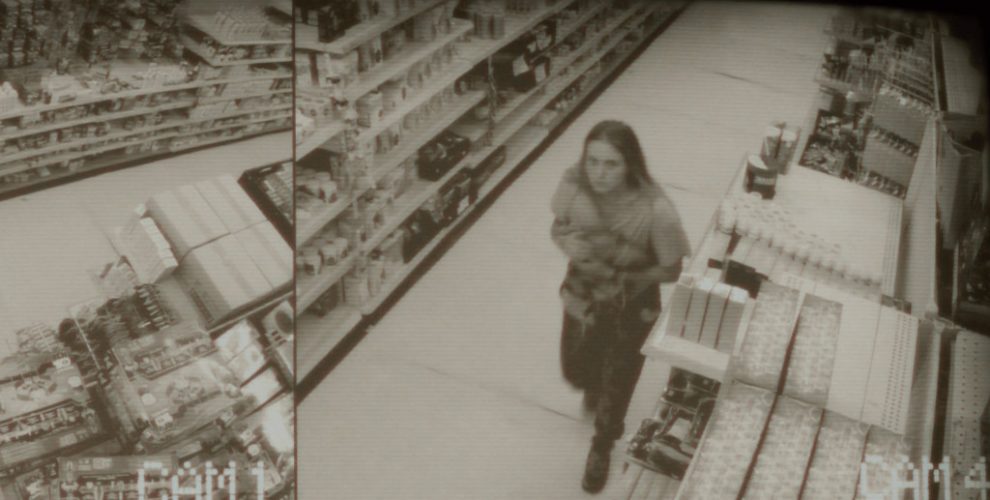
As Watts recounts, to keep the girl calm and cooperative, Isabel had been feeding her Lithium, as well as the stories of how she was her real mother, not Lucy. This explains the call that the police receive in ’90, where she says that Tom is not her father and asks about Will. She had been under the influence of the drug and had not yet completely recovered her original self. Having played the role of Mary for so long, it must have taken some time for Julie to break off the character.
As she grew up, she started having questions about the place, her brother, her home, and considering how she had been caged up for so long, Watts decided to help her. He allowed her to escape, giving her a rendezvous point, assuring that he would help her. However, once she escaped, Julie ran off and was never again seen by Watts. Years of searching led him to the convent where she had once been, and he found out that she had died of AIDS sometime earlier. And that was the whole truth. Despite several hints, and expectations, of a bigger conspiracy, of powerful men looking for the girl who escaped, the speculation of a cult or a paedo-group involved, it all came down to a woman who saw her own daughter in someone else’s.
The Princess and the Castle
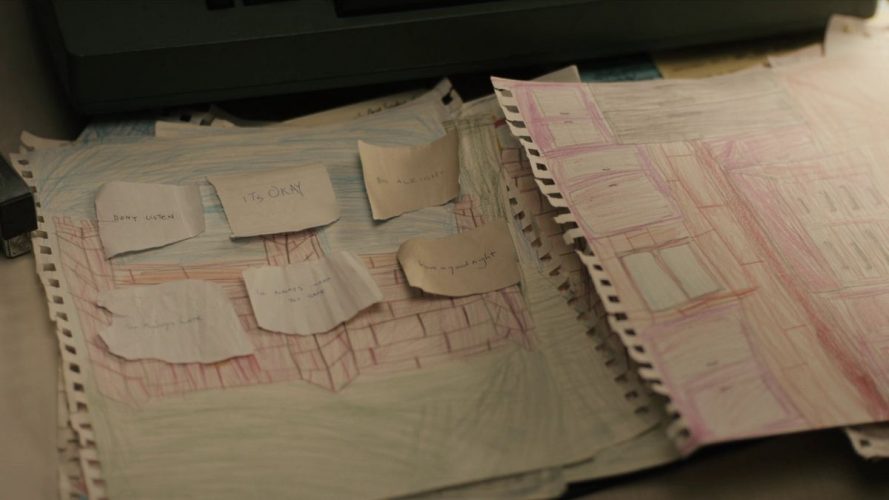
When they finally find Watts, the detectives get to know the whole truth, something that lines up with every evidence they had, every lead they had followed, every statement they had collected from people. They couldn’t find the girl, but they did find her grave, in the convent. But that was not the end of her story, as Hays later discovers.
When Julie was a kid, she and her brother would go out in the woods to meet an “aunt”. Will was protective of his little sister, and when she had doubts about the aunt or felt scared or threatened, Will would comfort her, saying that he would protect her. The hole in the wall between their rooms wasn’t a peephole, as the detectives were earlier led to believe. The children used it to communicate with each other.
On the day of his death, Will tries to stop Isabel from taking Julie, but he dies. Watts tells Julie that he is just unconscious, however, she can’t leave her brother like this. So, they take his body to the cave, where Julie crosses his hands in prayer, adding “the element of affection in it”. She also leaves the dolls on the way to help someone find Will. The next ten years of her life are spent in the pink room with Isabel Hoyt. She finally escapes with Watts’ help and ends with a bunch of teenagers on the street.
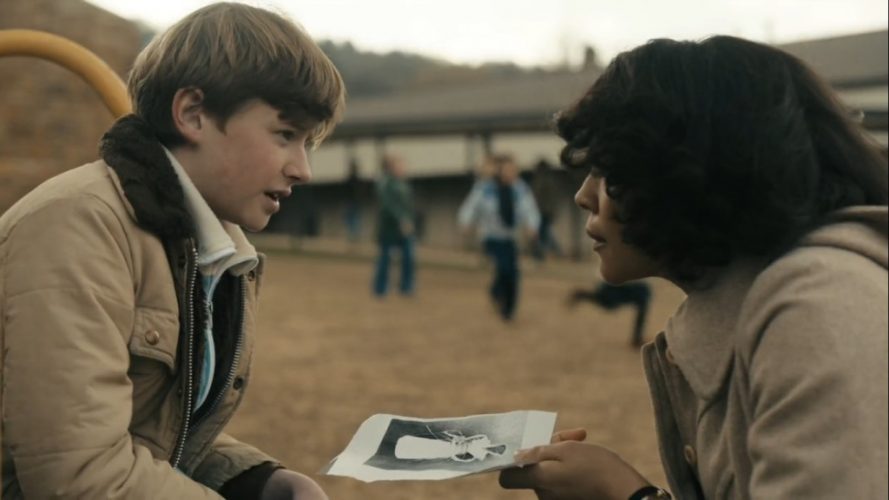
From there, she finds her way to the convent and this is where her life changes for the better. The convent is the place where Ardoin Landscapes provides free services. The son of the owner turns out to be Mike Ardoin, the same kid who had told the detectives about the night of the Halloween. There he finds Julie, they fall in love, get married, have a daughter and live a happy life. The nuns at the convent, one of whom is a girl who had spent some time on the streets with Julie, the one who was interviewed by Amelia, cover up for Julie by making a grave to her name and telling anyone who comes asking that she is dead.
Now Am Found
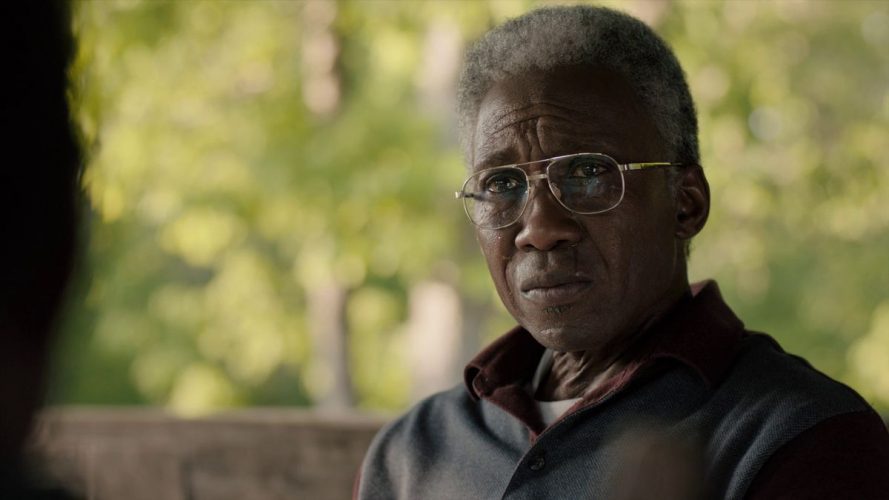
The thing with unreliable narrators is that you never know if their story is really the truth. A minor glitch, a slight symbolism, and you are forced to reconsider your faith in the narrator. Since the beginning of this season, the viewers have been sceptical about Wayne’s point of view. His very first line is “I remember.” While this is to reassure the people who are going to hear his story, it doesn’t sound so convincing. Why do we need this reassurance in the first place? What was actually going on with Wayne? How fractured were his memories?
While this question keeps poking us throughout the series, we get to see the case come to a proper conclusion, with Wayne finally locating Julie Purcell, even if he forgets it in a matter of minutes. He reunites with his daughter, spends time with his grandchildren, and relaxes on the porch with his family. As he watches his grandkids ride by, in a similar fashion that we saw the Purcell kids, something clicks in his head and he goes back to the night in ’80 when he made amends with Amelia and proposed her for marriage. She agrees to say yes in the future when he’ll ask her properly, and they exit the bar, hand in hand. When they open the door, we see them walking into a bright white light, followed by the scene of Wayne walking into the dense forest in Vietnam. In the simplest terms, this could mean that Wayne has finally found closure to the case that haunted most of his life. Him walking into the light with Amelia could mean that his letting go of the case has allowed him to pass on, he doesn’t feel tethered to his responsibility towards the Purcell kids anymore. So maybe, he passed away on the porch.
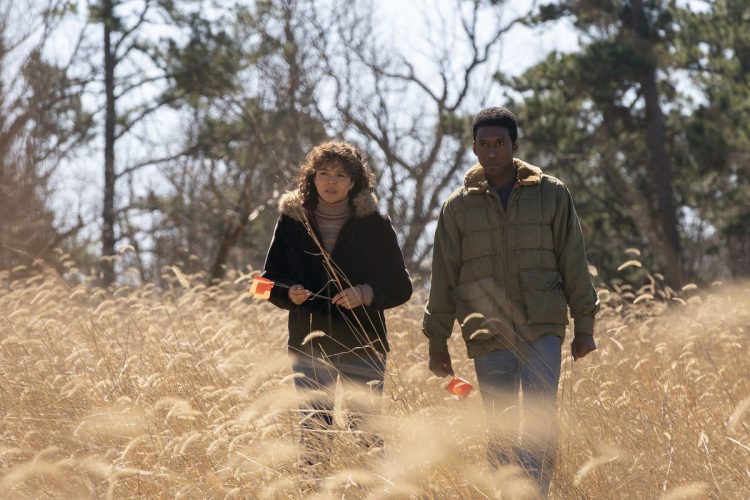
There is another thing that could be one of the possibilities, though we can’t be so sure about it. We have seen a number of stories where the protagonist had been in a sort of limbo. It’s like they died, but in order to move on, they needed to make peace with certain things in their lives. For Wayne, the Purcell case would be one of those things. Both he and Amelia had been obsessed with the case for a long time in their lives, and now that the mystery is solved, they walk away from it, together. So, if this was the case, how long had Wayne been dead for? How much of the story happened while he was alive, and how much of it was him, processing his situation in the limbo? Finding answers to these questions would lead one down a byzantine spiral, where every answer would only lead to further questions. While we can’t fully explain it, the scenario can be used to justify the final scene.
As was evident throughout the series, the Purcell case wasn’t the only thing haunting Wayne. His harrowing time in the War was another thing he would need to come to terms with before passing over to the other side. Who knows what horrors he had seen, what things he had done back there? He found closure for one thing in his life, but now, he needs to go back further and resolve something else in the past. Him entering the forest, all alone, could be the sign of the commencement of that journey, another story that needs resolution. The story that goes on and on, until it heals itself!
Read More in Explainers: Dexter | Mindhunter | Sharp Objects

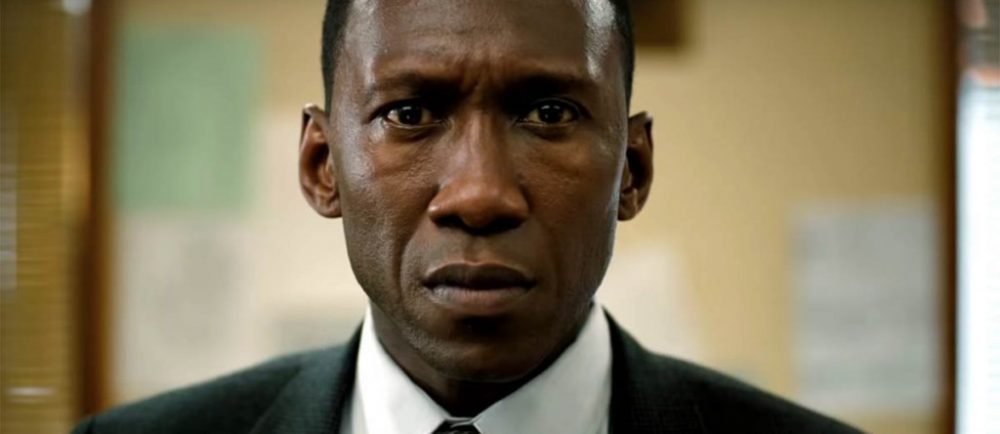
You must be logged in to post a comment.